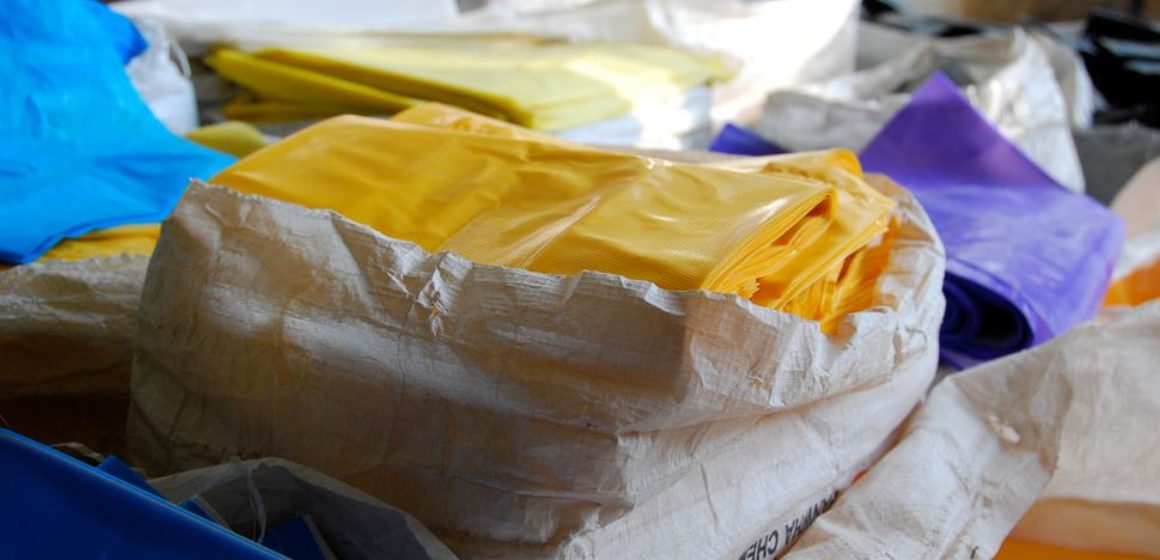How do Plastic Bags Contribute to Environmental Damage?
INTRODUCTION
Plastic bags are among some of the items which are biodegradable. To put it more subtly, they don’t decay on their own like discarded food, paper, and fruits. It can take some thousands of years before a plastic bag can turn into tiny pieces. Like any other things which are made of plastic, plastic bags are made of various chemicals like xylene, benzene, and ethylene which are highly toxic. Apart from the danger caused by such toxic chemicals, plastic bags also clog the gutters and drains and thereby lead to the growth of mosquitoes and other insects. The flash floods that the Indian city Mumbai experienced in the summer of 2005 were blamed by the authorities on the clogging of city’s drains by plastic bags (The Asian News, 2005). Plastic bags can contaminate natural resources like water and air as well as have a damaging impact on the land and marine environment. Reduced use of plastic bags and proper recycling of used plastic bags is the only way to reduce their harmful impact on the environment.
There are several ways in which plastic bags can have a damaging impact on the environment.
PLASTIC BAGS AND THEIR HARMFUL EFFECTS
Plastics bags can lead to the pollution of water and air as well as have a damaging effect on the marine environment.
As specified in the introduction, plastic bags are made with hazardous chemicals. Since the making of these plastic bags involves heating the raw materials used at very high temperatures, many of these chemicals including CO2 will be released into the environment. According to a study by the Lifecycle Environmental Assessment, the manufacturing process of two plastic bags emits a total of 1.1 kg of impurities into the atmosphere. The pollutants get mixed up with the other gases in the atmosphere and contribute to acid rain and smog. Acid rains and smog contaminated with toxic gases can severely damage the health of human beings and animals. Acid rains are considered to be a serious threat to both natural and man-made environments. This is more so in regions which have traditionally relied on fossil fuels like coals for meeting energy needs. Smog is also well documented to be contributing to ill health among human beings. In addition, manufacturing of two plastic bags releases 0.1 g of water based waste. This water borne waste has the capacity to damage associated ecosystems like waterways and the plants and animals that depend on them for their survival.
This paper was written by one of our professional essay writers. Writers at Academic Mentor Online can handle papers on any discipline. Contact us with the details of paper you need. Our support department will be glad to assist you.
The fact which exacerbates the problem of air and water pollution is that, most of the manufacturing of these plastic bags is undertaken in emerging economies like China and India with slack environmental regulations (Matlack, 2001). This results in even higher impact on environment and human health. When compared with the developing economies, developed countries like the US and UK have better infrastructure to deal with plastic waste and can hence reduce the damaging effects of plastic bags on the environment (Spivey, 2003). The problem of poor infrastructure to deal with plastic bags in developing countries is compounded by the limited access to health care for the poor.

Plastic bags are a big menace not only to the human beings and animals that live on the land. They can also damage the marine environment and impact the life of marine living beings. Hardly recyclable, plastic bags enter the marine ecosystem easily. Plastic bags which are left out on the beaches make their way into the sea and damage the health of marine creatures. Fish and seabirds which eat plastic bags damage their digestive systems and die swiftly. Some of the other kinds of health damages to marine life due to the ingestion of plastics include blockage of enzyme secretion, reduced stimulus for feeding, reproductive failure, and lower secretion of some crucial hormones (Azzarello and Van-Vleet 1987).The danger of plastic bags is not just limited to seabirds and fish. Plastic bags drifting on the ocean currents can also cause damage to the other marine creatures like Turtles. Young sea turtles born on the beaches are mainly found to be susceptible to plastic bags. According to a study on new born turtles by Derraik (2002) some 79 cases were identified where the stomachs of turtles were totally filled with plastic debris. Once these plastic bags enter the stomachs of young turtles, they don’t get ejected out of the digestive at the time of defecation. Instead, they remain in the stomach and intestines.
CONCLUSION
Apart from the two ways discussed through which plastic bags can damage the environment, there are a lot of other dangers due to plastic bags like the release of toxic gases when they are burned and contamination of milk products when plastic bags are swallowed by cows and buffalos. Plastic bags damage the health of individuals and the environment in all stages of their life. These dangers due to the plastic bags can be averted to a certain extent by following some measures like reusing plastic bags more number of times, donate plastic bags to recycling centres, use eco-friendly bags, etc.
References
- Azzarello, MY& Van-Vleet, ES, 1987, ‘Marine birds and plastic pollution’, Marine Ecology Progress Series, vol. 37, pp.295–303.
- Derraik, JGB, 2002, ‘The pollution of the marine environment by plastic debris: A review’, Marine Pollution Bulletin, vol. 44, pp. 842-852.
- Matlack, A 2001, Introduction to green chemistry, Marcel Dekker, New York.
- Spivey, A 2003, ‘Plastic bags – Prolific problems.” Environmental Health Perspectives, vol. 111, no. 4, pp. 208-212.
- The Asian News 2005, Viewed on 7 February 2014, <http://www.theasiannews.co.uk/heritage/s/204/204628_bags_of_misery_in_monsoon_mayhem.html>.
